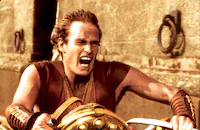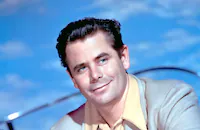Midway
Brief Synopsis
Cast & Crew
Jack Smight
Robert Ito
Conrad Yama
Kip Niven
Glen Corbett
Toshiro Mifune
Film Details
Technical Specs
Synopsis
The Japanese try to end their military standoff with the Allies during World War II.
Director
Jack Smight
Cast
Robert Ito
Conrad Yama
Kip Niven
Glen Corbett

Toshiro Mifune
Tom Selleck
Monte Markham
Phillip R Allen
Pat Morita
Christina Kokubo

Dabney Coleman
Seth Sekai
David Macklin

Robert Webber

Robert Wagner
Alfie Wise
Ed Nelson

Christopher George

Charlton Heston
Edward Laurence Albert
Dennis Rucker
John Fujioka
Erik Estrada

Glenn Ford

Gregory Walcott

James Shigeta
Michael Richardson

Cliff Robertson
Kevin Dobson

Henry Fonda
Sab Shimono
Steve Kanaly

Robert Mitchum
Hal Holbrook
Clyde Kusatsu

James Coburn

Biff Mcguire
Crew
John M. Dwyer
William Gray
Richard Hashimoto
Robert Martin
Jack Mcmaster
Walter Mirisch
Leonard Peterson
Donald S. Sanford
Jerome M. Siegel
Harry Stradling Jr.
Bernard M Strean
Robert Swink
Walter Tyler
Frank Urioste
John Williams
Film Details
Technical Specs
Articles
Midway
Midway incorporates actual Word War II color battle footage as well as stock footage from other films in its combat sequences. The newly shot footage was photographed by Harry Stradling, Jr., son of the great cinematographer Harry Stradling and a talented artist in his own right. He received Academy Award nominations for his work on 1776 (1972) and The Way We Were (1973). For added authenticity, an actual World War II-era aircraft carrier, the Lexington, was used for location shooting. Charlton Heston recalls: "Planning was crucial during the time we were at sea aboard the Lexington: we could only film on the flight deck, the hangar deck, and the bridge at specified and rigidly circumscribed times, but the whole voyage was exciting. I even did several carrier landings and takeoffs."
Director Jack Smight got his start directing Twilight Zone episodes and continued to make a number of television films, including the underrated Frankenstein: the True Story (1973). His most interesting feature film of the period is arguably the pitch-black comedy No Way to Treat a Lady (1968). During the mid-70s he achieved his greatest notoriety as a director of action films, among them the popular Airport 1975 (1975), Midway (both of which star Heston) and Damnation Alley (1977). Supporting actor Cliff Robertson, who won an Academy Award for Best Actor in Charly (1968), was at the peak of his career, having recently made his directing debut with J. W. Coop (1972) and giving strong showings as an actor in Ace Eli and Roger of the Skies (1973), Three Days of the Condor (1975) and Obsession (1976). However, the following year his position in Hollywood would become precarious when he accused David Begelman at Columbia Pictures of forging his signature on a $10,000 check from the studio, resulting in the exposure of Begelman's embezzlement scheme. Many executives resented Robertson for embarrassing the industry; for some time afterward he had difficulty finding work.
According to Robert Mitchum biographer George Eells, Mitchum was originally approached by producer Walter Mirisch to play Admiral Nimitz, but he refused the offer and proposed Henry Fonda in his place. Mirisch then offered him the part of Rear Admiral Spruance, which went to Glenn Ford. Mitchum, who wanted to work as little as possible, ended up taking the role of Admiral Halsey, which required only one day of shooting since Halsey was bedridden during the battle. Mitchum later donated his fee to charity. However, the standout performance among the film's many major actors is generally regarded to be Henry Fonda as Admiral Nimitz. At the time of the film's release Variety wrote: "Perhaps because Henry Fonda is old enough to know about, and care about, the actual environment of the film, his performance as....Nimitz towers over everything else."
Midway was one of a handful of films - including Earthquake (1974) and Rollercoaster (1977) - to use the Sensurround process. Designed by Universal Studios for Earthquake, it involved a specially designed sound system which produced ultra low frequency vibrations during action sequences, via special encoding on the film's soundtrack. Only first-run theaters equipped with the costly Sensurround sound system and decoder were able to reproduce the effect. Allegedly the rumbles produced by the system were so loud (up to 120 decibels) that they occasionally caused damage to the actual theater buildings.
Director: Jack Smight
Producer: Walter Mirisch
Screenplay: Donald S. Sanford
Cinematographer: Harry Stradling, Jr.
Editor: Robert Swink, Frank J. Urioste
Music: John Williams
Art Director: Walter Tyler
Principal Cast: Charlton Heston (Capt. Matt Garth), Edward Albert (Ensign Tom Garth), Christina Kokubo (Haruko Sakura), Henry Fonda (Adm. Chester W. Nimitz), James Coburn (Capt. Vinton Maddox), Glenn Ford (Rear Adm. Raymond A. Spruance), Hal Holbrook (Cmdr. Joseph Rochefort), Toshiro Mifune (Adm. Isoroku Yamamoto), Robert Mitchum (Adm. William F. Halsey), Cliff Robertson (Cmdr. Carl Jessop), Robert Wagner (Lt. Commander Ernest Blake), James Shigeta (Vice Admiral Chuichi Nagumo).
C-131m. Letterboxed. Closed captioning.
by James Steffen

Midway
Pat Morita (1932-2005)
He was born Noriyuki Morita on June 28, 1932 in Isleton, California. The son of migrant fruit pickers, he contracted spinal tuberculosis when he was two and spent the next nine years in a sanitarium run by Catholic priests near Sacramento. He was renamed Pat, and after several spinal surgical procedures and learning how to walk, the 11-year-old Morita was sent to an internment camp at Gila River, Arizona, joining his family and thousands of other Japanese-Americans who were shamefully imprisoned by the U.S. government after Japan’s attack on Pearl Harbor.
His family was released after the war, and Morita graduated from high school in Fairfield, California in 1950. He worked in his family's Chinese restaurant in Sacramento until his father was killed in a hit-and-run accident. He eventually found work as a data processor for the Department of Motor Vehicles and then Aerojet General Corporation before he decided to try his hand at stand-up comedy.
He relocated to San Francisco in 1962, where at first, there was some hesitation from clubs to book a Japanese-American comic, but Morita's enthusiasm soon warmed them over, and he was becoming something of a regional hit in all the Bay Area. His breakthrough came in 1964 when he was booked on ABC's The Hollywood Palace. The image of a small, unassuming Asian with the broad mannerisms and delivery of a modern American was something new in its day. He was a hit, and soon found more bookings on the show. And after he earned the nickname "the hip nip," he quickly began headlining clubs in Las Vegas and Los Angeles.
Morita's stage and television success eventually led him to films. He made his movie debut as "Oriental #2," the henchman to Beatrice Lilly in the Julie Andrew's musical Thoroughly Modern Millie (1967). Although his role, complete with thick coke-bottle glasses and gaping overbite, was a little hard to watch, it was the best he could do at the time. Subsequent parts, as in Don Knott's dreadful The Shakiest Gun in the West (1968); and Bob Hope's lamentable final film Cancel My Reservations (1972); were simply variations of the same stereotype.
However, television was far kinder to Morita. After some popular guest appearances in the early '70s on Rowan & Martin's Laugh-In, and The Tonight Show with Johnny Carson, Morita landed some semi-regular work. First, as the wisecracking, cigar chomping Captain Sam Pack on M.A.S.H. and as Ah Chew, the deadpan neighbor of Fred and Lamont Sanford in Sanford & Son. His success in these roles led to his first regular gig, as Arnold Takahashi in Happy Days. His stint as the owner of the soda shop where Ritchie Cunningham and the Fonz hung out for endless hours may have been short lived (just two seasons 1974-76), but it was Morita's first successful stab at pop immortality.
He left Happy Days to star in his own show, the critically savaged culture clash sitcom Mr. T and Tina that was canceled after just five episodes. Despite that setback, Morita rebounded that same year with his first dramatic performance, and a fine one at that, when he portrayed a Japanese-American internment camp survivor in the moving made for television drama Farewell to Manzanar (1976). After a few more guest appearances on hit shows (Magnum P.I., The Love Boat etc.), Morita found the goldmine and added new life to his career when he took the role of Miyagi in The Karate Kid (1984). Playing opposite Ralph Macchio, the young man who becomes his martial arts pupil, Morita was both touching and wise, and the warm bond he created with Macchio during the course of the film really proved that he had some serious acting chops. The flick was the surprise box-office hit of 1984, and Morita's career, if briefly, opened up to new possibilities.
He scored two parts in television specials that were notable in that his race was never referenced: first as the horse in Alice in Wonderland (1985); and as the toymaster in Babes in Toyland (1986). He also landed a detective show (with of course, comic undertones) that ran for two seasons Ohara (1987-89); nailed some funny lines in Honeymoon in Vegas (1992); was the sole saving grace of Gus Van Zandt's Even Cowgirls Get the Blues (1993); and starred in all of the sequels to The Karate Kid: The Karate Kid, Part II (1986), The Karate Kid, Part III (1989), and The Next Karate Kid (1994). Granted, it is arguable that Morita's career never truly blossomed out of the "wise old Asian man" caricature. But give the man his due, when it came to infusing such parts with sly wit and sheer charm, nobody did it better. Morita is survived by his wife, Evelyn; daughters, Erin, Aly and Tia; his brother, Harry, and two grandchildren.
by Michael T. Toole
Pat Morita (1932-2005)
Quotes
Can I ask you something personal? Very personal?- Captain Garth
Sure.- Commander Rochefort
You know, it really stinks down here. How often do some of your people take a bath?- Captain Garth
Bath? Hell, I don't know. What *day* is it?- Commander Rochefort
How much can you decipher?- Captain Garth
Fifteen percent.- Commander Rochefort
Really decipher?- Captain Garth
Ten percent.- Commander Rochefort
That's one word in ten, Joe! You're guessing!- Captain Garth
We like to call it "analysis."- Commander Rochefort
Once, we filled the sky with our aircraft. Now we win or lose with six fighters and ten torpedo planes.- RAdm. Tamon Yamaguchi
I'd say the only problem your boy has is... enemy identification.- Cmdr. Jessop
They sacrifice themselves like Samurai, these Americans.- Vice Adm. Chuichi Nagumo
If it's Midway, I'll bushwhack 'em!- RAdm. Raymond A. Spruance
Trivia
Originally shown in Sensurround, a system which had special low-pitch woofers for sound effects.
Most dogfight sequences come from 1942 newsreels, with considerable cropping due to the need to adapt the image to the Panavision framing.
Most sequences of the Japanese air raids on Midway are stock shots from 20th Century Fox's Tora! Tora! Tora! (1970) (for instance, the jeep thrown into a wall by a bomb blast).
Several action scenes, including the one were a Zero slams into the Yorktown's bridge, were taken from Away All Boats (1956).
Scenes of Dolittle's Tokyo raid at the beginning of the movie are from Thirty Seconds Over Tokyo (1944).
Miscellaneous Notes
Released in United States Winter January 1, 1976
Re-released in United States on Video October 24, 1995
Released in United States on Video October 30, 2001
Sensurround
Released in United States Winter January 1, 1976
Re-released in United States on Video October 24, 1995
Released in United States on Video October 30, 2001













